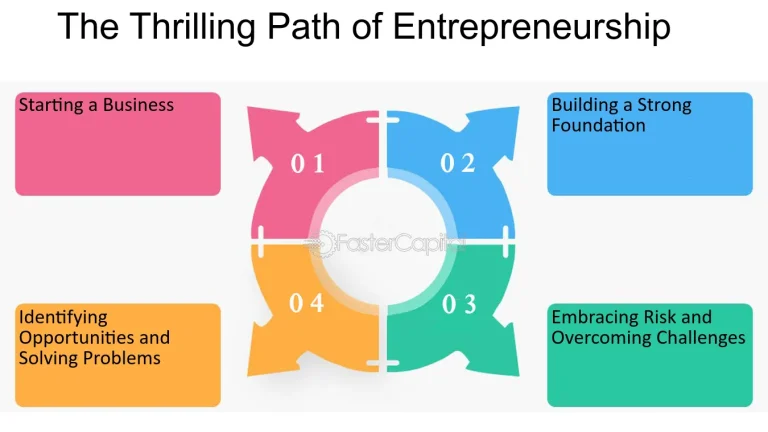HOW2INVEST: A COMPLETE GUIDE TO SMART INVESTING
InToake money in the stock market, you have to invest. Sounds easy enough, but with all of the conflicting information out there, it can be hard to know where to start. This comprehensive guide to smart investing will teach you everything you need to know to get started.
You’ll learn about the different types of investment vehicles available, how to read financial statements, and what factors to consider when making investment decisions. You’ll also learn about the different risks associated with investing, and how to protect yourself against them. By the end of this guide, you’ll be able to confidently make investment decisions that will help you reach your financial goals.
Introduction
The How2Invest app is designed to provide users with a complete guide to smart investing. The app covers a range of topics, from the basics of investing to more advanced concepts. The How2Invest team has put together a comprehensive guide that covers everything from the basics of investing to more advanced concepts.
Why is it important to invest?
When it comes to financial planning, saving, and investing are key components to achieving your goals. While you may have a clear idea of what you want to achieve, you may not be sure of the best way to get there.
Investing can be a great way to grow your money while taking less risk than gambling or stock market speculation. When done correctly, investing can provide you with a steady stream of income and help you reach your financial goals.
There are many different types of investments, and each has its own set of risks and rewards. It’s important to do your research and understand the different options before deciding how to invest your money.
Here are three reasons why investing is important:
Investing can help you reach your financial goals.
If you want to retire early or buy a home, investing can help you reach your goals faster. By investing your money, you can potentially earn a higher return than if you simply saved your money in a bank account.
Investing can help you diversify your portfolio.
Investing can help you diversify your portfolio and reduce your overall risk. By investing in different asset classes, you can protect yourself from losses in one investment with gains in another.
Investing can provide you with a source of income.
Investing can provide you with a source of income that can help you pay your bills and live a comfortable life. If you invest wisely, you can potentially earn a higher return than if you simply saved your money in a bank account.
Investing is a key part of financial planning, and it’s important to understand the different options before deciding how to invest your money. By doing your research and investing wisely, you can reach your financial goals and enjoy a comfortable retirement.
How can you start investing?
Most people think that investing is something that only wealthy people can do. However, that’s not true! Anyone can start investing, no matter how much money they have. Investing is one of the smartest things you can do with your money.
There are many different ways to invest, and the best way to start investing is to figure out what fits your goals and preferences. Do you want to be hands-off or hands-on? Do you want to invest for the long term or the short term?
Once you know what you want, you can start researching the different types of investments. Some popular investments include stocks, bonds, and real estate. You can also invest in more unique things like cryptocurrency or art.
Once you’ve decided what you want to invest in, it’s time to start putting your money into it. You can do this through a brokerage account or an investment platform.
Investing may seem like a complicated process, but it doesn’t have to be. With a little research and some patience, anyone can start investing and see their money grow.
What are the different types of investments?
When it comes to investing, there are many different options to choose from. Each type of investment has its own set of risks and rewards. Here are some of the most common types of investments:
- Savings Accounts: A savings account is a type of deposit account held at a bank or other financial institution. The account holder deposits money into the account, and the money is then held by the financial institution. The account holder can then use the money in the account for various purposes, such as making purchases or paying bills.
- Certificates of Deposit: A certificate of deposit, or CD, is a type of deposit account that offers a higher interest rate than a savings account. The account holder deposits money into the account, and the money is then held by the financial institution. The account holder can then use the money in the account for various purposes, such as making purchases or paying bills.
- Money Market Accounts: A money market account is a type of deposit account that offers a higher interest rate than a savings account. The account holder deposits money into the account, and the money is then held by the financial institution. The account holder can then use the money in the account for various purposes, such as making purchases or paying bills.
- Treasury Bills: Treasury bills, or T-bills, are short-term debt securities issued by the U.S. government. T-bills have a maturity of one year or less. The account holder purchases the T-bill at a discount, and the T-bill is then held by the financial institution. When the T-bill matures, the account holder receives the full face value of the T-bill.
- Bonds: Bonds are long-term debt securities issued by corporations and governments. The account holder purchases the bond at a specified price, and the bond is then held by the financial institution. When the bond matures, the account holder receives the full face value of the bond.
- Mutual Funds: Mutual funds are investment vehicles that pool money from many investors and invest the money in a variety of securities. The account holder purchases shares of the mutual fund and the mutual fund
How do you choose the right investment?
When it comes to investing your hard-earned money, there is no shortage of options available. With so many different investment products on the market, it can be difficult to know which one is right for you.
The first step is to understand your investment goals. Are you looking to grow your wealth over the long term, or are you more interested in generating income in the short term? Once you know what you’re looking to achieve, you can start to narrow down your options.
There are a few different types of investments to choose from, each with its own set of pros and cons. For example, stocks and mutual funds offer the potential for high returns, but they also come with the risk of loss. Bonds and CDs are generally considered to be less risky, but they also tend to offer lower returns.
The best way to choose the right investment for you is to consult with a financial advisor. A qualified advisor can help you understand your options and make recommendations based on your specific goals and risk tolerance.
How do you monitor your investments?
When it comes to investing, there is no one-size-fits-all approach. The way you monitor your investments will depend on your individual goals and objectives. However, some general tips can help you keep tabs on your investment portfolio.
One of the most important things you can do is to stay informed about the markets and the companies you are invested in. This means reading financial news and keeping up with market trends. You can do this by subscribing to financial publications, following financial news channels, and using online resources.
It is also important to review your investment portfolio regularly. This will help you to identify any changes that need to be made and to make sure that your investments are still on track to meet your goals. Reviewing your portfolio can be done on a quarterly or semi-annual basis.
Monitoring your investments is an important part of being a successful investor. By staying informed, reviewing your portfolio, and having a plan in place, you can help to ensure that your investments are meeting your goals.
When should you sell your investments?
This is a question that many investors struggle with. After all, no one wants to sell their investments too early and miss out on potential profits. But at the same time, no one wants to hold on to their investments for too long and watch their value decline. So when is the right time to sell your investments?
Here are a few factors to consider when deciding to sell your investments:
- Your investment goals
- Your investment timeframe
- Your risk tolerance
- Market conditions
- Your circumstances
- What are the risks associated with investing?
Investing involves risk. That’s a fact. But there are smart ways to manage risk, and there are foolish ways. The key is to understand the difference.
There are two types of risk when it comes to investing:
- Systematic risk
- Unsystematic risk
Systematic risk is the type of risk that is inherent to the entire market. It’s also known as market risk. Examples of systematic risk include recessions, inflation, natural disasters, and political upheaval.
Unsystematic risk is specific to a particular company or industry. Examples of unsystematic risk include a company’s financial mismanagement, a strike at a company’s factory, or a new product that fails to catch on.
Investors must manage both types of risk. But they can do so in different ways.
Systematic risk can’t be eliminated. But it can be diversified away. Diversification is a technique that investors use to spread their money across different asset classes, sectors, and geographies. By diversifying, investors can reduce their exposure to systematic risk.
Unsystematic risk can be eliminated through careful research. By analyzing a company’s financial statements, for example, an investor can get a sense of its management’s competence. Or by studying a company’s history, an investor can gauge its ability to weather tough times.
The bottom line is that all investors must manage risk. But by understanding the different types of risk, and by using diversification and research, investors can minimize the impact of risk on their portfolios.
Conclusion
When it comes to investing, there is no one-size-fits-all approach.
What works for one person may not work for another.
The key is to find an approach that suits your individual needs and goals.
There are several different ways to approach investing.
The most important thing is to find an approach that you are comfortable with and that aligns with your financial goals.

Greetings! I’m thrilled to introduce myself as a dedicated blogger with a fervent passion for crafting meticulously researched and insightful blogs. My mission is to provide you, the readers, with a treasure trove of valuable information. Join me in this exciting adventure of discovery – Thanks






